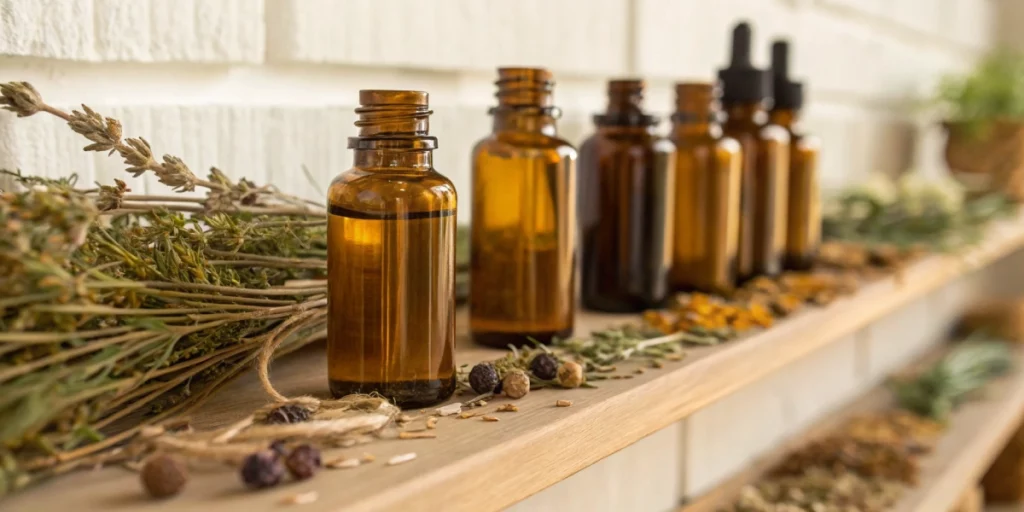What Is Cannabis Sativa Seed Oil?
Botanical Origin and Extraction Process
Cannabis sativa seed oil comes directly from ripe, thoroughly harvested hemp seeds. Farmers ensure seeds reach full maturity before collecting them, which preserves maximum nutrient content. After harvesting, they clean and air-dry seeds to remove debris and moisture. Producers then use cold-press techniques, applying controlled pressure to crush seeds without generating heat. This careful method safeguards delicate fatty acids and minor antioxidants. Finally, manufacturers filter the oil gently, eliminating particulates while keeping its rich molecular profile intact. This rigorous sequence guarantees a clean, potent base for crafting gentle skincare blends that resonate with quality-focused users.
Traditional cold-press extraction avoids solvents and high temperatures that could degrade key nutrients. Mechanical presses crush seed shells, forcing oil through fine meshes under low heat. Some brands label their product “unrefined” or “virgin” to highlight that they skipped harsh refining steps. This transparency offers confidence to consumers who seek naturally processed ingredients. By retaining minor bioactive compounds, the final oil carries both functional lipids and trace phytonutrients. As a result, formulators trust this foundation for creating effective, natural cleansers that support skin health from the very first application.
Nutrient Profile and Fatty Acid Content
Cannabis sativa seed oil delivers an optimal balance of essential fatty acids—about 3:1 in favor of linoleic acid (omega-6) over alpha-linolenic acid (omega-3). This nutrient ratio mirrors what skin needs for robust barrier function and sustained hydration. Linoleic acid strengthens cell walls and enhances moisture retention, while alpha-linolenic acid delivers soothing, anti-inflammatory effects. The oil also contains the rarer gamma-linolenic acid, which further calms redness and irritation. Together, these fatty acids offer comprehensive nourishment without leaving a greasy finish, making the oil suitable for diverse skin types, from oily to very dry.
Beyond its fatty acid profile, this seed oil features significant levels of vitamin E, a powerful antioxidant that shields skin cells from free radical damage and environmental stress. Trace minerals—such as zinc for tissue repair and magnesium for enzymatic balance—complement the lipid matrix. These co-factors support natural regeneration processes and help maintain a smooth, even complexion. When incorporated into an herbal cleanser, this synergistic blend of lipids, vitamins, and minerals provides both protective and restorative benefits, delivering a multi-dimensional approach to daily skin maintenance.
Why It’s Valued in Herbal Formulations
Skincare formulators prize cannabis sativa seed oil for its silky texture and rapid absorption. The oil glides effortlessly across the skin surface, dissolving unwanted impurities without clogging pores or leaving residue. Its lightweight feel adapts well to combination and oily skin, while still delivering ample nourishment to drier areas. By blending it into balms, serums, and especially gentle cleansers, brands harness its compatibility and remarkable stability over a wide range of pH levels and environmental conditions.
In addition, herbal specialists value its subtle, nutty scent, which blends harmoniously with other botanical extracts and essential oils. This mild aroma avoids overpowering delicate herbal notes, allowing each botanical ingredient to make its own aromatic contribution. As a result, creators can build complex, multi-ingredient formulas that deliver functional benefits and sensory appeal. This adaptability and consumer-friendly profile have cemented hemp seed oil’s place in clean beauty products that prioritize both efficacy and natural authenticity.
Key Ingredients and Their Skin Benefits
Linoleic and Alpha-Linolenic Acids
Linoleic acid plays a central role in promoting healthy cell turnover and restoring barrier integrity. It reduces inflammation and calm redness after exposure to harsh environmental factors. By boosting lipid production in the upper skin layer, it helps lock in moisture and prevent transepidermal water loss. Many users notice a visibly smoother, more supple texture with consistent use, and oily or combination skin types appreciate that it absorbs quickly without adding excess shine.
Alpha-linolenic acid complements this action by delivering soothing relief to stressed or irritated skin. It helps ease discomfort following acne treatments or sun exposure, while strengthening the skin’s natural defenses against pollutants. Over time, ALA supports improved resilience and balanced tone. Users often report enhanced clarity and reduced sensitivity as their barrier function improves. This dual-fatty-acid approach creates a powerful yet gentle foundation for maintaining vibrant, healthy-looking skin day after day.
Natural Antioxidants and Vitamins
Vitamin E, prevalent in this seed oil, works as a frontline defender against oxidative stress. It scavenges free radicals generated by UV light, pollution, and everyday environmental aggressors, preventing premature aging. Regular application can help minimize the appearance of fine lines and uneven pigmentation, promoting a luminous complexion. When combined with other plant-derived antioxidants in a formula, vitamin E strengthens overall defense mechanisms for a layered protective effect. For those exploring the benefits of cannabis-derived skincare, questions often arise like is it legal to buy cannabis seeds online—a topic worth understanding as interest in hemp-based wellness continues to grow.
In addition to antioxidants, trace minerals such as zinc and magnesium enhance the oil’s restorative potential. Zinc supports inflammation control and tissue repair, which can help calm red or breakouts-prone areas. Magnesium stimulates enzymatic processes vital for healthy cell renewal and soothes tight, irritated patches. This nutrient synergy delivers both immediate comfort and long-term improvements, empowering skin to recover from daily stresses while staying balanced, clear, and visibly radiant.
Synergy With Other Herbal Extracts
Formulators often pair hemp seed oil with complementary botanicals like chamomile, calendula, or green tea to enhance efficacy. Chamomile extract brings potent soothing properties that reduce redness and irritation. Calendula promotes gentle cell regeneration, helping to soften rough patches and speed recovery from minor skin damage. Green tea contributes catechins—powerful antioxidants that combat free radicals and support a clearer, more even tone.
By combining these ingredients, brands create formulations with multi-target benefits. Each botanical enhances the others, delivering collective anti-inflammatory, antioxidant, and regenerative actions. This synergy enables a single cleansing step to provide both deep purification and calming nourishment. Users enjoy a holistic skincare experience that addresses cleansing, soothing, and protective needs in one streamlined ritual.

How the Cleanser Works to Purify Skin
Mechanism of Oil-Based Cleansing
Oil-based cleansers employ the principle that “like dissolves like” to remove stubborn makeup, sebum, and environmental grime. When applied to damp skin, the cleansing oil binds to oily impurities without stripping away natural lipids essential for barrier integrity. The gentle massage action loosens debris from pores, while the oil’s emollient nature cushions skin against friction, preventing irritation that can arise from abrasive cleansers.
After massaging for about a minute, rinsing with lukewarm water transforms the oil into a milky emulsion, lifting away trapped pollutants and makeup. This process leaves skin feeling soft, supple, and fully cleansed, without any tightness or dryness. By preserving natural moisture levels, oil-based cleansing creates an ideal canvas for follow-up treatments like serums and moisturizers, ensuring active ingredients absorb effectively into well-nourished skin.
Balancing Sebum Without Stripping
Traditional foaming cleansers can disrupt skin’s pH and strip protective oils, triggering rebound oil production. In contrast, an oil-based approach reinforces the lipid barrier and signals skin to regulate sebum naturally. The unique fatty acid profile of cannabis sativa seed oil mirrors skin’s own lipids, helping maintain a healthy balance between oil and hydration. As barrier function improves, oily areas feel less slick and dry zones gain lasting moisture.
Regular use of oil-based cleansers often leads to fewer breakouts and reduced shine in oily zones, without compromising hydration. Sensitive skin types prone to redness or tightness after foaming washes find relief in this gentler method. With consistent application, users typically experience more even sebum production, calmer skin, and fewer sensitivity flare-ups over time.
Removing Makeup and Environmental Pollutants
Oil-based cleansers excel at dissolving heavy cosmetics, sunscreen, and urban pollutants that cling tenaciously to skin. By massaging the oil evenly across the face for at least sixty seconds, you ensure deep penetration into pores to dislodge every trace of makeup, excess oil, and airborne particles. The emulsion created during rinsing captures these impurities, whisking them away without residue or ghostly stains.
This approach also mitigates oxidative stress from daily exposure to pollution and exhaust. The oil binds microscopic airborne particles before they penetrate the skin, preventing them from triggering inflammation or free-radical damage. After cleansing, skin feels refreshed, balanced, and protected, with none of the harsh side effects of abrasive scrubs or synthetic detergents.
Comparing to Other Herbal Cleansers
Plant Oils vs. Synthetic Surfactants
Many conventional cleansers rely on sulfates or synthetic surfactants to create foam and lift dirt. While they generate satisfying lather, these ingredients can strip skin of its natural oils and disturb barrier function. In contrast, plant oils such as hemp seed oil offer a gentle yet effective clean. They dissolve debris without depriving skin of essential lipids, preserving hydration and preventing irritation.
Users often note reduced redness and itching when they switch to oil-based cleansers. Synthetic surfactants tend to weaken the skin’s protective layer, leading to dryness and sensitivity over time. By working in harmony with skin’s own processes, plant oils maintain balance and promote long-term health and resilience.
Sensitivity and Irritation Profiles
Foaming gels and detergent-rich formulas can aggravate reactive skin types, triggering flare-ups in conditions like eczema or rosacea. Hemp seed oil, with its balanced fatty acid content, delivers soothing relief without harsh side effects. It coats the skin in a protective emollient layer that calms inflammation, reduces redness, and supports barrier repair.
Clinical assessments show lower irritation scores for oil-based cleansers compared to traditional foaming options. Users report immediate comfort and a noticeable reduction in sensitivity. Over weeks of use, markers of inflammation decrease and skin tone evens out, confirming the gentle yet powerful nature of plant-based cleansing.
Environmental and Sustainability Factors
Plant-derived cleansers carry a lighter ecological footprint than formulations containing petroleum-based surfactants. Hemp plants grow rapidly, require minimal water, and help rejuvenate soil health through crop rotation. Producers harvest seeds annually with little need for synthetic fertilizers or pesticides. This regenerative cycle aligns with sustainable agriculture practices and appeals to eco-conscious consumers.
Synthetic surfactants often stem from nonrenewable resources and undergo energy-intensive processing. They can release microplastics and toxic byproducts into waterways. By choosing hemp seed oil, brands and consumers reduce reliance on petrochemical inputs and support cleaner ecosystems from field to final product.
Incorporating It Into Your Skincare Routine
Morning vs. Evening Use
In the morning, a light application of oil-based cleanser refreshes skin without disrupting makeup or SPF layers. Massage a small amount over damp skin, then rinse and follow with toner, serums, and sunscreen. This gentle cleanse primes skin for environmental challenges ahead and boosts the performance of daytime antioxidants and UV protectants.
At night, use the oil as the first step in a double-cleanse routine to ensure complete removal of makeup, sunscreen, and daily grime. Follow with a mild water-based cleanser to clear any residual oil. This two-step ritual leaves skin fully prepped for intensive night treatments, enabling serums and night creams to penetrate deeply and work more effectively.
Layering With Toners and Serums
After rinsing off the oil-based cleanser, apply a pH-balancing toner to prepare skin for active ingredients. Next, layer targeted serums such as hyaluronic acid for hydration or vitamin C for brightening. The oil cleanse clears pores and enhances skin permeability, allowing these serums to deliver maximum impact. Finally, seal in moisture with a lightweight lotion or cream that complements your skin’s needs.
This structured sequence prevents product buildup and ensures each layer performs its function optimally. Users often notice plumper, more even-toned skin within weeks as each product works synergistically, supported by the nourishing foundation left behind by the oil cleanse.
Storage and Shelf-Life Tips
To maintain potency, store your herbal cleanser in a cool, dark spot away from direct sunlight and heat sources. Oxygen and light can break down valuable fatty acids and vitamins, diminishing efficacy. Choose an amber or opaque dispenser to shield contents. Once opened, aim to use the product within six to nine months to enjoy peak freshness and nutrient levels.
Always secure the cap tightly to minimize air exposure. If you detect changes in color, scent, or texture, it indicates oxidation or spoilage—replace with a fresh bottle. Proper storage ensures that each application delivers the full spectrum of benefits your skin deserves.

FAQs about cannabis sativa seed oil herbal cleanser
Is it suitable for acne-prone skin?
Absolutely, it suits acne-prone skin by regulating sebum production and unclogging pores. Its balanced fatty acids strengthen the barrier and reduce excess oil. Anti-inflammatory properties calm redness and swelling, helping blemishes heal faster. With gentle, non-comedogenic action, this cleanser prevents new breakouts while soothing existing ones. Users often notice smoother, clearer skin within a month of twice-daily use.
How often should I use this herbal cleanser?
Using it twice daily—morning and night—delivers optimal benefits, ensuring you remove pollutants and makeup thoroughly. If your skin feels tight or dry, limit use to evenings only. Always observe your skin’s response and adjust accordingly. Consistent application maintains barrier integrity, prevents oil imbalances, and promotes ongoing clarity and smoothness over time.
Can it replace a toner or moisturizer?
No, this cleanser cleanses and preps but does not offer the hydrating or occlusive benefits of toners or moisturizers. It leaves the skin balanced and receptive but lacks the water-based hydration of a toner and the locking power of a moisturizer. Always follow with a hydrating toner and a nourishing cream to complete your routine and optimize skin health.





